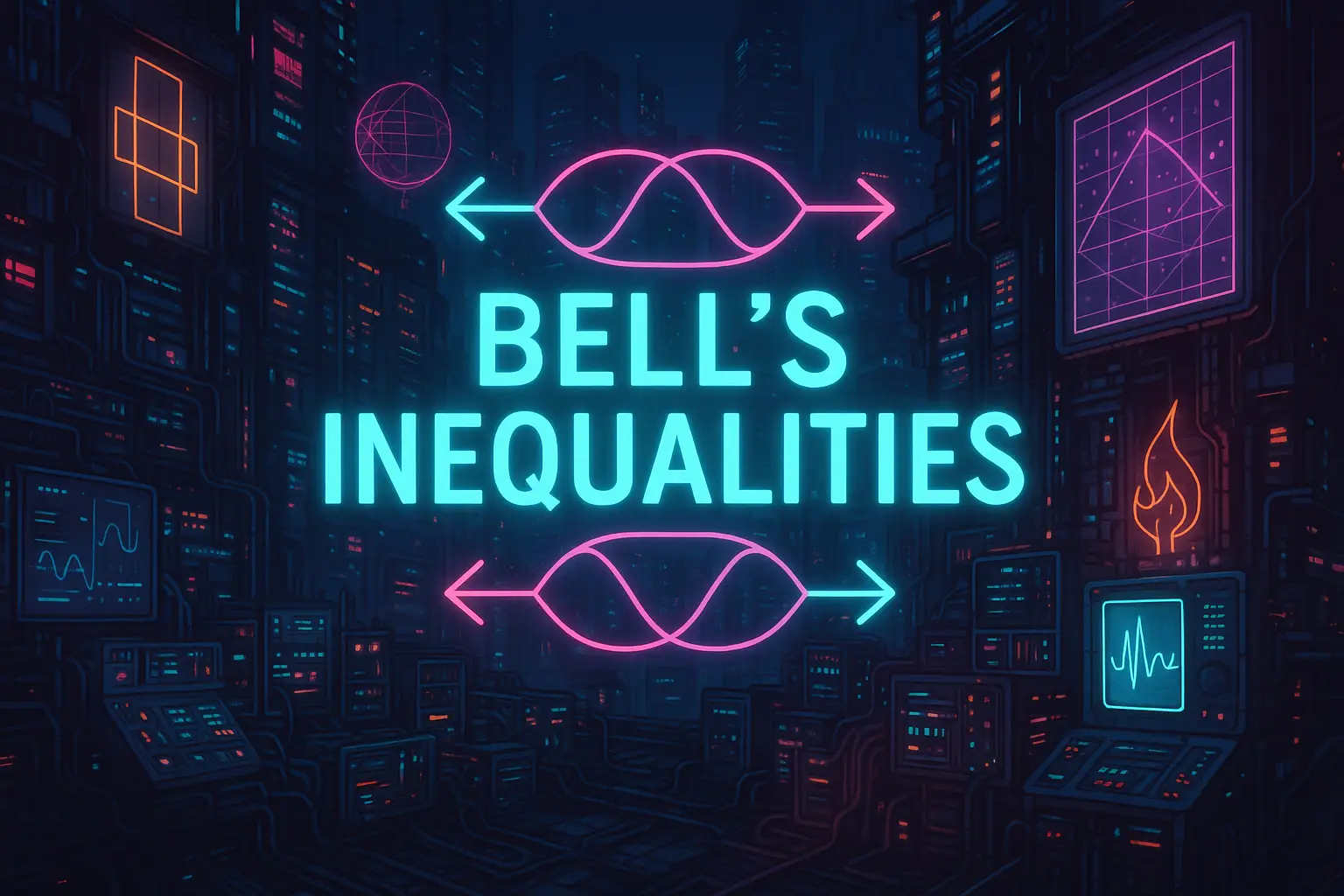Table of Contents
- Introduction
- Background: Local Realism and Hidden Variables
- The EPR Paradox and Motivation
- John Bell’s Insight
- Derivation of Bell’s Inequality
- The CHSH Inequality
- Quantum Mechanical Predictions
- Violation of Bell’s Inequality
- Experimental Tests of Bell’s Theorem
- Loopholes and Their Closure
- Implications for Quantum Foundations
- Bell’s Inequality and Entanglement
- Role in Quantum Information Theory
- Bell Inequalities Beyond Qubits
- Philosophical Significance
- Conclusion
1. Introduction
Bell’s inequalities are fundamental to the study of quantum foundations. They provide a framework to test whether the predictions of quantum mechanics can be explained by any theory based on local realism—the idea that physical processes are local and properties exist independently of observation.
2. Background: Local Realism and Hidden Variables
Local realism combines two assumptions:
- Locality: Physical influences do not travel faster than the speed of light.
- Realism: Physical properties exist before and independent of measurement.
A class of theories known as hidden variable theories aimed to preserve these classical principles while reproducing quantum phenomena.
3. The EPR Paradox and Motivation
In 1935, Einstein, Podolsky, and Rosen (EPR) published a paper arguing that quantum mechanics is incomplete. They considered two entangled particles and claimed that perfect correlations implied the existence of hidden variables, challenging the completeness of the quantum description.
4. John Bell’s Insight
In 1964, John Bell formulated a mathematical inequality—Bell’s inequality—which any local hidden variable theory must satisfy. He showed that quantum mechanics predicts situations where the inequality is violated, enabling an experimental distinction between quantum mechanics and local realism.
5. Derivation of Bell’s Inequality
Consider a pair of particles shared between two observers, Alice and Bob. Each can choose to measure one of two settings, labeled \( A, A’ \) for Alice and \( B, B’ \) for Bob, with binary outcomes \( \pm1 \).
Under local hidden variables, the following must hold:
\[
|E(A,B) – E(A,B’)| + |E(A’,B) + E(A’,B’)| \leq 2
\]
This is the CHSH inequality, a generalized Bell inequality named after Clauser, Horne, Shimony, and Holt.
6. The CHSH Inequality
Let \( E(A,B) \) denote the expectation value of the product of measurement outcomes when Alice and Bob use settings \( A \) and \( B \). Then the CHSH inequality is:
\[
S = |E(A,B) – E(A,B’) + E(A’,B) + E(A’,B’)| \leq 2
\]
If quantum mechanics predicts \( S > 2 \), then local realism fails.
7. Quantum Mechanical Predictions
For a maximally entangled state such as the Bell state:
\[
|\Phi^+\rangle = \frac{1}{\sqrt{2}}(|00\rangle + |11\rangle)
\]
Quantum mechanics predicts:
\[
S = 2\sqrt{2} > 2
\]
This value, known as Tsirelson’s bound, exceeds the classical limit and confirms that entangled particles violate Bell-type inequalities.
8. Violation of Bell’s Inequality
The violation indicates that either:
- Locality, or
- Realism
must be abandoned. Quantum mechanics predicts and experiments confirm such violations, implying that the universe is nonlocal or nonrealistic, or both.
9. Experimental Tests of Bell’s Theorem
Key experiments:
- Aspect et al. (1981-82): Verified quantum predictions with photons.
- Weihs et al. (1998): Addressed the communication loophole.
- Hensen et al. (2015): First loophole-free Bell test using entangled electron spins.
These tests consistently confirm quantum mechanical predictions.
10. Loopholes and Their Closure
To confirm Bell inequality violations conclusively, several loopholes must be closed:
- Detection loophole: Not all particles are detected.
- Locality loophole: Measurement settings must be space-like separated.
- Freedom-of-choice loophole: Measurement choices must be independent of hidden variables.
Modern experiments aim to close all of these simultaneously.
11. Implications for Quantum Foundations
Bell’s theorem implies:
- No theory based on local hidden variables can reproduce all quantum predictions.
- Any realistic theory must be nonlocal.
- The universe is fundamentally different from classical intuition.
12. Bell’s Inequality and Entanglement
- Entanglement is necessary for violating Bell’s inequalities.
- However, not all entangled states violate them.
- Bell inequality violation is a witness of nonlocality, not entanglement per se.
13. Role in Quantum Information Theory
- Device-independent quantum cryptography: Security relies on Bell violation.
- Self-testing quantum devices: Validate behavior based on inequality tests.
- Quantum randomness generation: Based on violation of classical expectations.
14. Bell Inequalities Beyond Qubits
- Generalizations exist for higher-dimensional systems.
- Mermin inequalities and GHZ states test multipartite entanglement.
- Bell inequalities are part of the broader study of nonlocal correlations.
15. Philosophical Significance
Bell’s inequalities challenge our basic understanding of:
- Reality
- Causality
- Determinism
They support interpretations like many-worlds, QBism, or relational quantum mechanics, while constraining classical hidden variable theories.
16. Conclusion
Bell’s inequalities mark a pivotal point in the history of physics. They transformed questions of philosophy into testable science. The experimental violations of these inequalities confirm the uniquely non-classical structure of reality as predicted by quantum mechanics. Understanding Bell’s work is essential for anyone exploring the foundations of physics and the future of quantum technologies.


